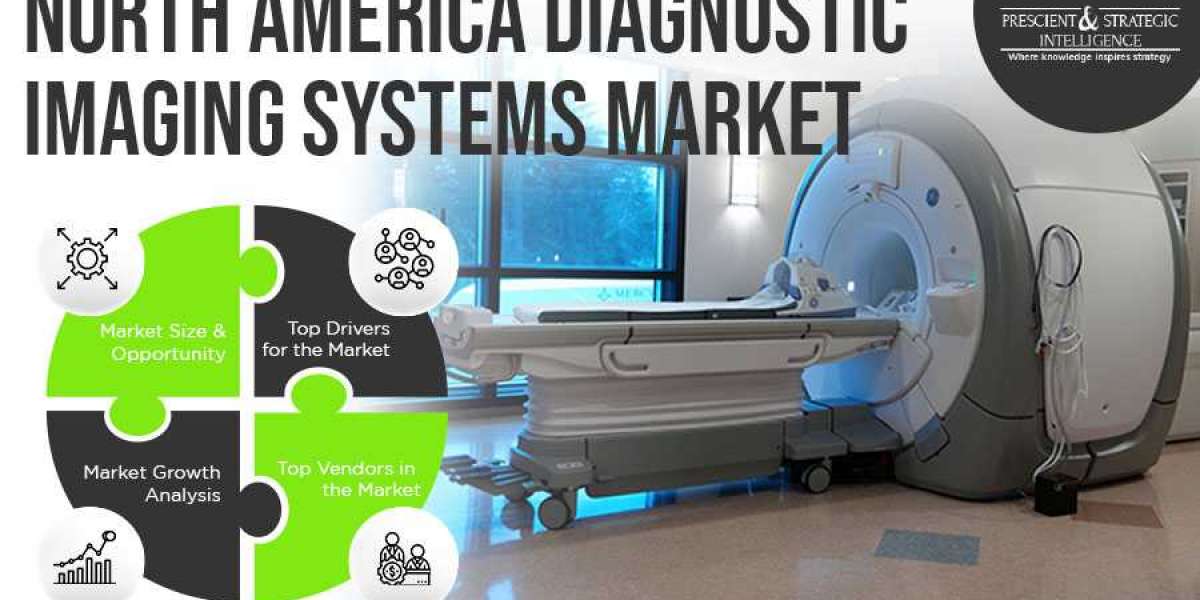According to the Centers for Disease Control and Prevention (CDC), six in ten adults in the U.S. are suffering from at least one chronic disease like diabetes, cancer, heart disease, or stroke. Moreover, the U.S. registers 1.7 million cancer cases and approximately 600,000 deaths due to cancer, annually, making it the second leading cause of death in the nation. Besides, incidences of type-2 diabetes, cancer, cardiovascular diseases (CVDs), and chronic obstructive pulmonary disease (COPD) are increasing in North America. The rising incidences of these diseases have increased the adoption of diagnostic imaging systems in the region.
These factors along with swelling geriatric population, surging healthcare spending, and constant innovations in technology are expected to derive the North American diagnostic imaging systems market growth. The market is projected to generate $17.7 billion revenue by 2024, progressing at a CAGR of 5.0% during the forecast period. This growth can be primarily supplemented by initiatives taken by governments of the North American nations.
Moreover, hospitals and diagnostic imaging centers in North America are adopting these diagnostic imaging systems in large numbers, due to the growing awareness among people regarding the benefits of early diagnosis and early symptoms of diseases. The governments in the region are conducting awareness programs to educate people about the early diagnosis of diseases, such as tuberculosis, arthritis, breast cancer, cardiovascular diseases, lung cancer, and diabetes, and the use of innovative diagnostic systems to dragonize these diseases, at an early stage. These boost the demand for diagnostic imaging systems in the region.
Additionally, the product segment under the North American diagnostic imaging systems market is categorized into nuclear imaging systems, X-ray imaging systems, ultrasound systems, magnetic resonance imaging (MRI) systems, computed tomography (CT) scanners, and others (mammography devices, endoscopes, elastography systems, and fluoroscopy systems). According to PS Intelligence, the X-ray imaging systems category is expected to dominate the market during the forecast period. This can be ascribed to the increasing demand for these systems, as these are the easiest and fastest way of viewing and analyzing bone injuries, structures, and joint abnormalities.
Get the sample pages of this report: https://www.psmarketresearch.com/market-analysis/north-america-diagnostic-imaging-systems-market/report-sample
To adhere to the increasing demand for diagnostic imaging devices, companies such as Esaote S.p.A., FUJIFILM Holdings Corporation, Karl Storz GmbH Co. Kg., Carestream Health Inc., General Electric Company, Canon Medical Systems Corporation, FUJIFILM Holdings Corporation, Dornier MedTech GmbH, Carestream Health Inc., Hologic Inc., Koninklijke Philips N.V., Esaote S.p.A., and Siemens AG, are indulging in collaborations and acquisitions. Through these strategic developments, these companies aim to improve patients’ access to novel technologies, increase market share and reach of companies, and enhance patient outcomes.
For example, in November 2018, GE Healthcare announced its plan to partner with Veteran Affairs (VA) Puget Sound Healthcare System, to increase the adoption of 3D imaging in healthcare. Similarly, Shimadzu Medical Systems USA, in January 2019, acquired Core Medical Imaging Inc. to amplify its healthcare business in North America. In the same vein, Shimadzu Medical Systems USA, one of the leading players in the North American diagnostic imaging systems market, acquired Core Medical Imaging Inc., in January 2019, to amplify its business in North America.
Thus, the widening portfolio of the diagnostic imaging devices is expected to propel the demand for such systems in foreseeable future. This will, in turn, help in improving the healthcare system of North America.





